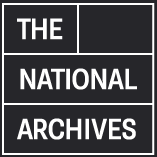
Wartime
Curriculum topics: The Second World War
The summer holidays in 1939 had just ended when war broke out across Europe. The seaside holidays and day trips that people had enjoyed so much since railways had made them possible, came to an end – for a time.
Over the next six years, the people of Britain were encouraged to holiday at home. Travelling on trains and driving long distances was discouraged.
Tasks
Look at document AN 2/1126 (35).
- What is the occupation of the man in the poster?
- Who is the man looking at? Keep the poster in an upright position and then move around it – try walking away from it and then move closer. Try standing on the left and on the right of the poster. What do you notice about where the man is looking?
- Do you think a holiday is a necessity?
Look at document INF 2/6 (186).
- Why do you think the British government wanted to keep holidaymakers off the railways during the war?
The British government had a difficult job on its hands. It had to persuade the public to keep the railways clear so that troops could be transported quickly and efficiently across Britain, from training camps to the ports.
It also had to keep the railways clear for other essential war work, such as transporting sick and injured to hospitals and, from 1940, evacuating children out of the cities to the countryside.
Petrol was rationed which meant that people couldn’t drive very far even if they had a car. The government wanted people to stay at home and work as much as possible to try to win the war. At the same time, the government realised that people needed to have some sort of holiday to look forward to. ‘Holidays at Home’ seemed to be the answer.
Look at document NSC 5/75. This is a government poster encouraging people to holiday at home. The money they would have spent on going away could be saved instead.
- What kinds of activities can you see on the poster?
- Can you think of any other stay-at-home holiday activities?
- How could you improve this poster? What would make a holiday at home more exciting?
As the war progressed and food supplies ran low, the government did encourage farming holiday camps. People could visit new places and their transport would be provided free of charge – in exchange for help bringing in the harvest. Workers and volunteers would eat picnic lunches all together.
Look at document INF 3/101 and INF 2/1.
- Have you ever stayed on a farm?
- How would you feel about a working holiday?
- What sort of picnic food do you think the volunteers are eating?
For many people, going on holiday is exciting because it means eating nice food at restaurants. To help people cope with the food shortages and lack of money for eating out, the government printed recipe books with ideas for meals and treats.
Look at document MAF 102/15 (1). There was a shortage of eggs throughout the war. This recipe collection for egg-free biscuits and cakes meant that people could still bake treats to take on picnics and to serve at tea parties.
The war finally came to an end six years after it began, in 1945. Rationing of food continued until 1954.
- Which recipe do you like the sound of most?
Activity ideas
- Plan a picnic – what food will you bring? Who will you invite? Can you think of a good location for your picnic? If it is a rainy day you could always have a carpet picnic!
- Bake a cake – perhaps using the wartime recipes!
- Dress up in 1940s fashion.
- Listen to music from the 1940s and invent a dance to go with it.
From holy days to extended holiday breaks, from holidays at home to holidays abroad – people have always needed a break from their routines and their work. Having something to look forward to is often as refreshing as the holiday itself. Happy holidays!
Back to topCurriculum topics: The Second World War
 The National Archives
The National Archives






